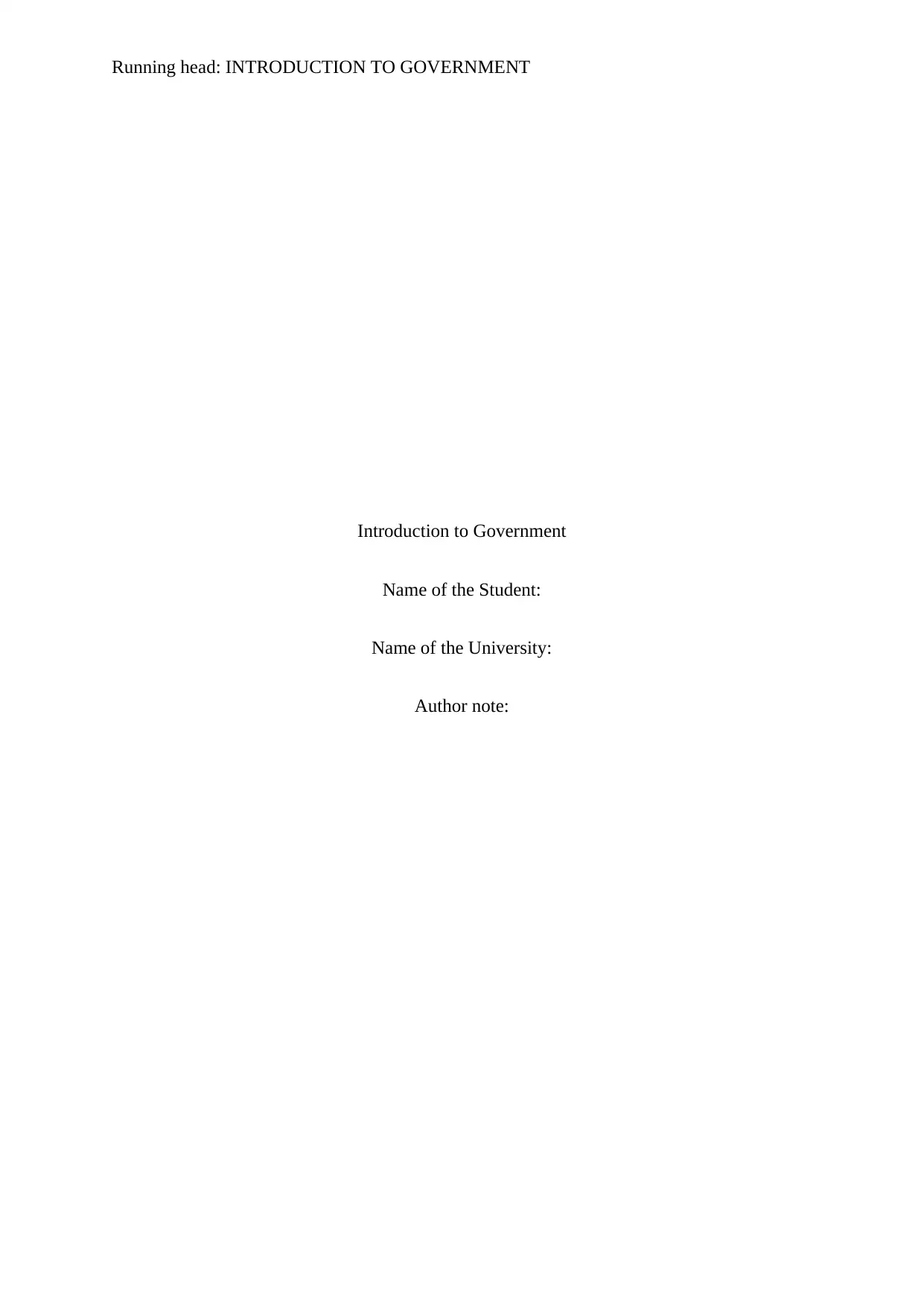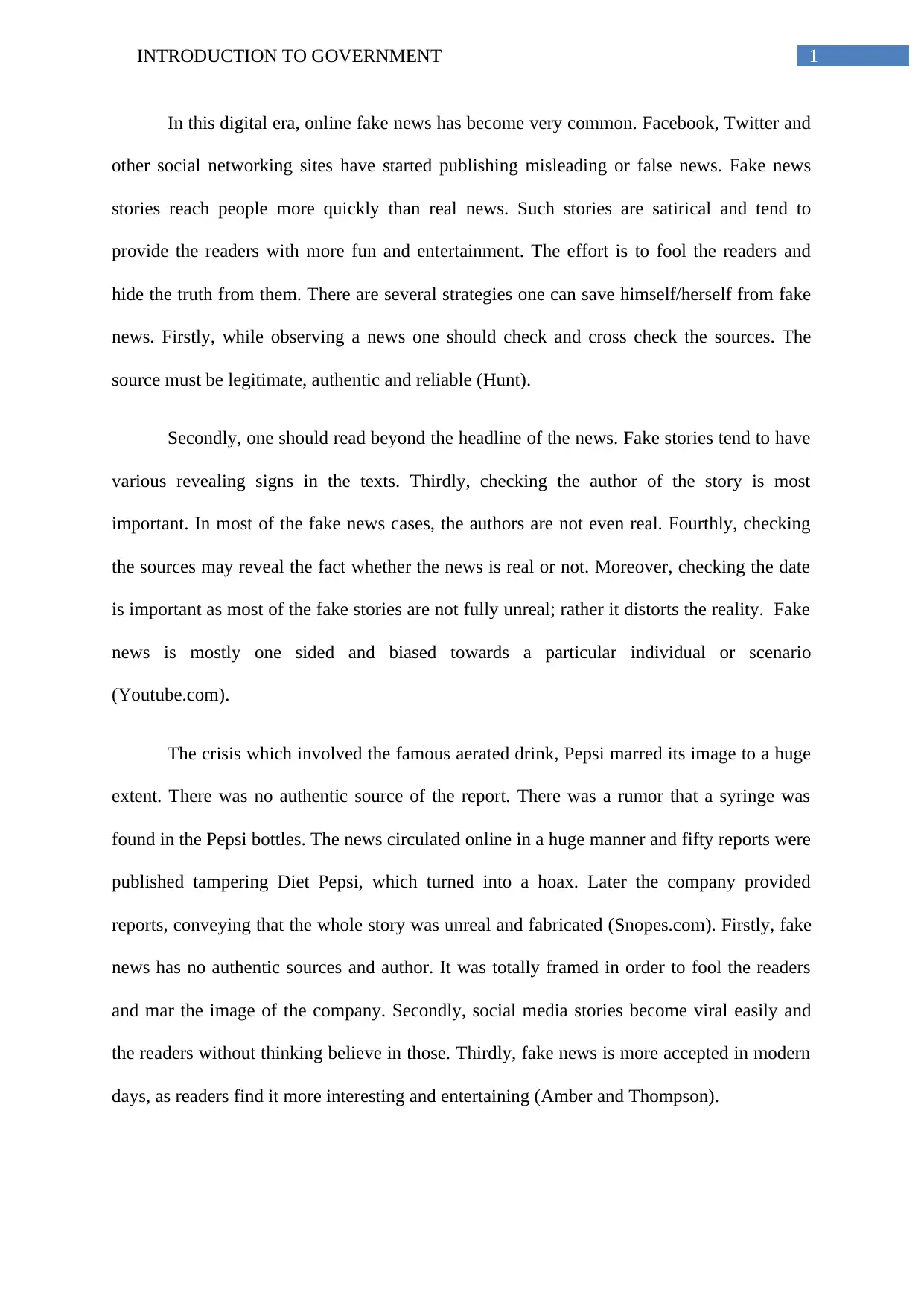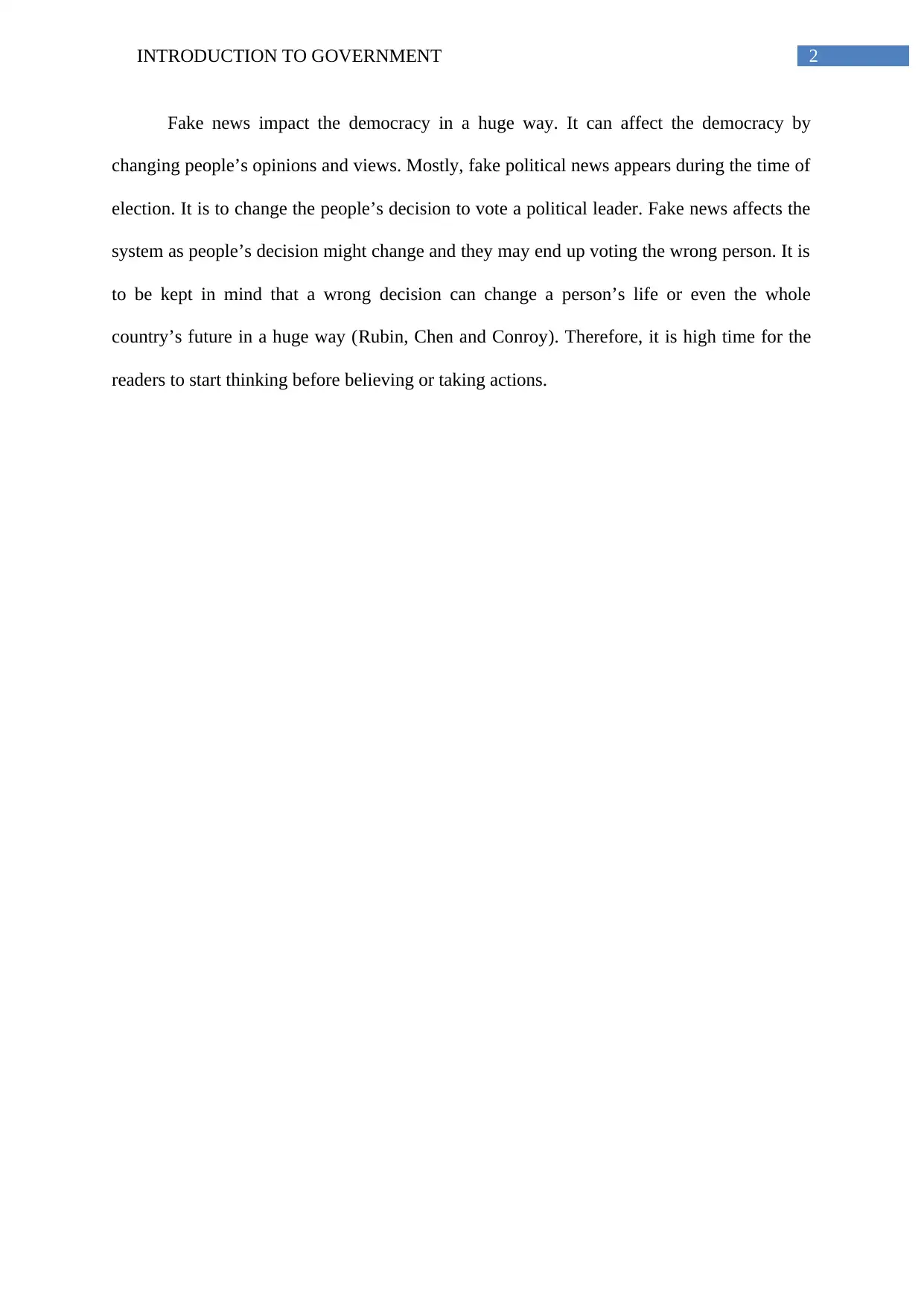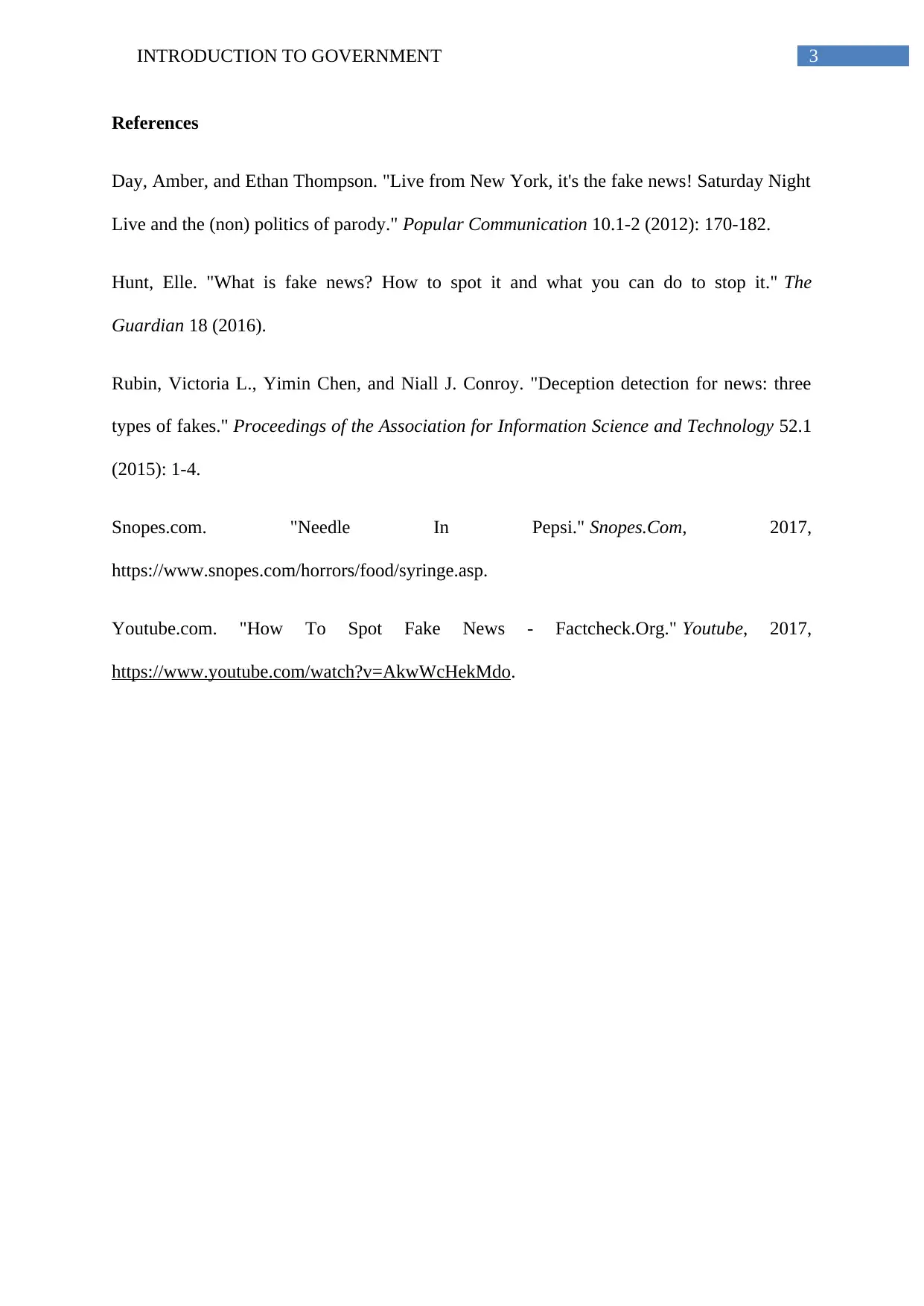A Report on the Impact of Fake News on Democracy and Society
VerifiedAdded on 2020/04/13
|4
|682
|199
Report
AI Summary
This report delves into the pervasive issue of fake news and its detrimental effects on democratic societies. It begins by defining fake news and outlining strategies for identifying it, emphasizing the importance of verifying sources, scrutinizing headlines, and checking author credibility. The report then examines a real-world example, the Pepsi syringe hoax, to illustrate how fake news can spread rapidly and damage reputations. The core of the report focuses on the profound impact of fake news on democracy, particularly during elections, where misinformation can sway public opinion and lead to flawed decisions. The report highlights the need for critical thinking and media literacy to combat the spread of fake news and protect the integrity of democratic processes. The report references several sources to support its arguments.
1 out of 4





![[object Object]](/_next/static/media/star-bottom.7253800d.svg)